Chastity Belt: Fact or Fiction? (13 photos)
Everyone knows about this item, but few would dare to try it on... A chastity belt is a device worn by women in the Middle Ages to ensure fidelity to their spouse. 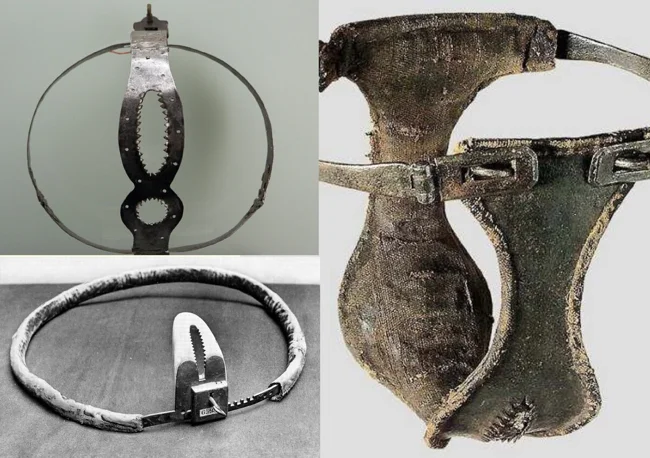
This creepy device is often mentioned in popular culture as an extreme method of ensuring fidelity. However, such belts are absent from most legitimate historical sources, which has always puzzled researchers. 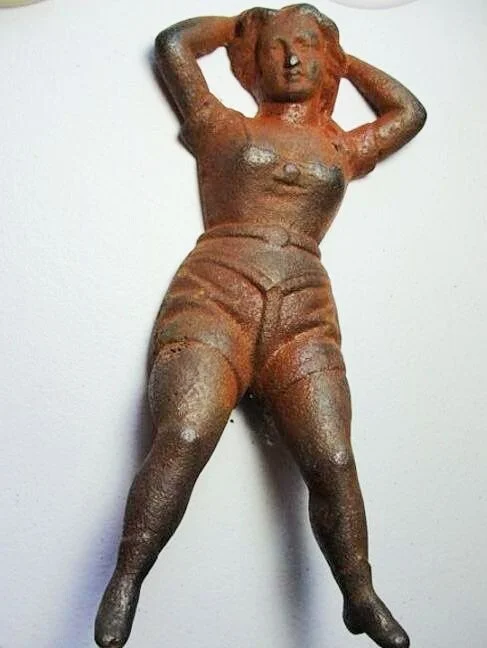
Female figurine with chastity belt.
So what is a chastity belt and did women really wear them? 
The belts were believed to control uncontrolled female promiscuity when knights went into battle, on pilgrimages, or on crusades. The bulky construction with a bunch of locks and a small hole for relieving oneself still evokes horror to this day (and in the case of pregnancy, the child would inevitably die). 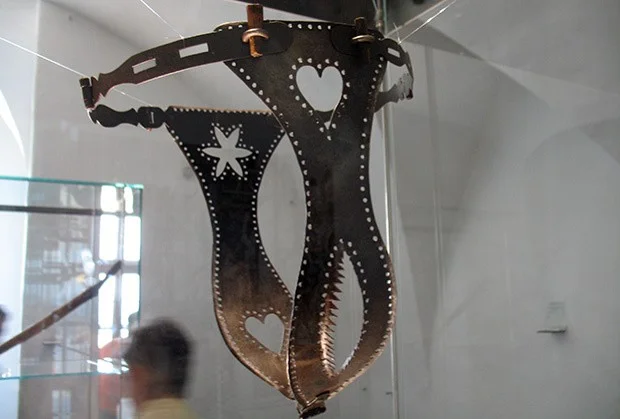
Chastity belt from the exposition of the Hohensalzburg Fortress Museum in Salzburg (Austria).
Just imagine, is it possible to wear a metal belt for years? Hardly. Most likely, scratches would appear on the body in a few days (at best). The wounds would inevitably fester, which would lead to infection of the genitals and fatal blood poisoning. 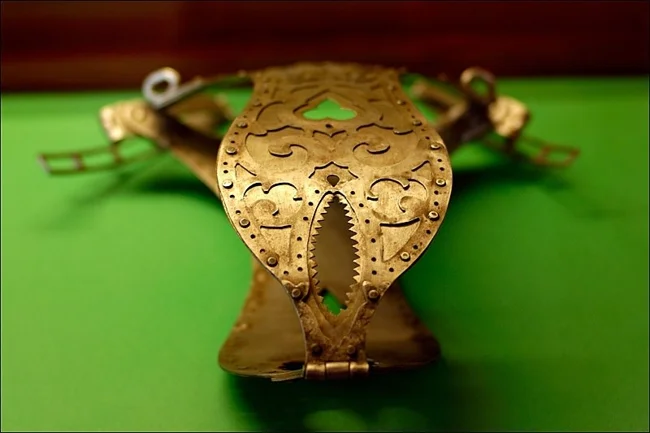
In medieval Europe, any sexual activity that did not result in conception was prohibited and condemned. In addition, adultery was considered a crime for which a woman could be publicly tarred and feathered, beaten, and even killed. 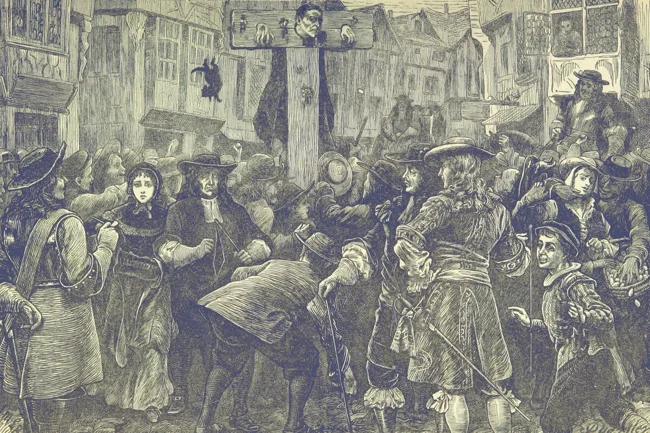
Fragment of the engraving "The Pillory", John Quartley, 1873. "The Pillory" was erected in a public place (on the central square). A woman tied to a pole became an object of ridicule and censure. Some stopped to express their opinion about the life of the guilty woman. Others could throw dirt, stones or spoiled food at her.
If a prudent husband really put a chastity belt on his wife, he would automatically admit that his faithful wife could commit adultery. It turns out that already at this stage she should have been punished, and not bothered with belts, which were nothing more than an erotic myth of the New Age. 
A German engraving from the 16th century depicts an ugly old man leaving, his wife in a chastity belt and her young lover with a key.
Albrecht Classen, author of the book "The Medieval Chastity Belt: The Process of Myth-Making", said that such belts were first mentioned in a treatise on siege engines by Konrad Kieser in 1405 (along with serious chapters, the author included descriptions of clearly fantastic objects, such as invisibility cloaks). 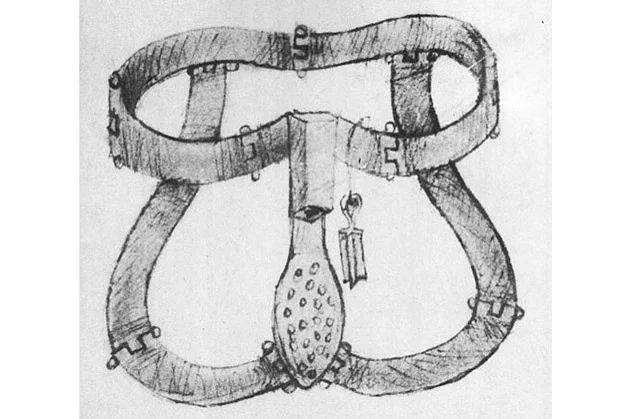
Chastity belt from the book "Bellifortis" (1405).
According to Classen, Kieser was a German engineer and artist, and the concept of the chastity belt was described in the afterword of his treatise. Other references to chastity belts in the 16th and 17th centuries can be interpreted as irony, satire, or metaphor in a historical context (the chastity belt acts as a symbol of male jealousy and female treachery):
"Deliver me from past sins, protect me from present ones, strengthen me from future ones. Grant me abstinence from food and drink, the chastity belt of chastity, purity of heart and lips," Alcuin, the court theologian and scholar of Charlemagne, prays to God. 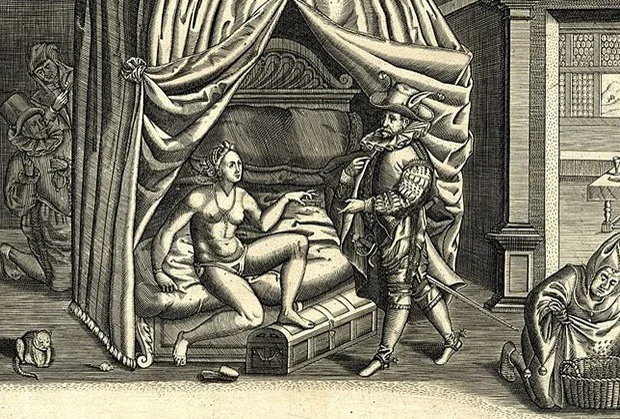
A chastity belt on an engraving from 1590.
Some believe that chastity belts were mass-produced in 15th-century Florence. However, we will not find any mention of this item in Giovanni Boccaccio's "Decameron" - a collection of everyday stories, mostly with love stories.
Boccaccio only talks about the chastity belt, and in Latin at that, in his encyclopedic book "The Origin of the Pagan Gods", describing it as a symbol of virginity: Venus unties it when a woman marries. 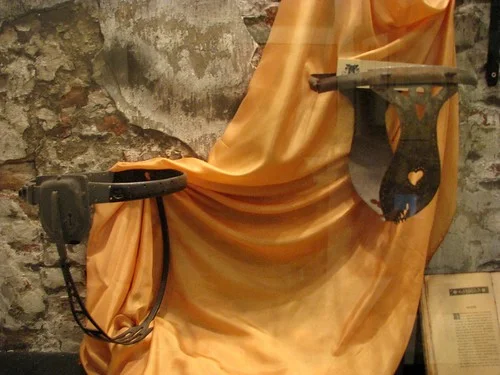
However, there is very little historical evidence that chastity belts were actual underwear in the Middle Ages. There is also no evidence to support their existence. Recent research suggests that this myth was likely spread by 18th- and 19th-century historians who wanted to highlight the backwardness of the Middle Ages compared to their era. 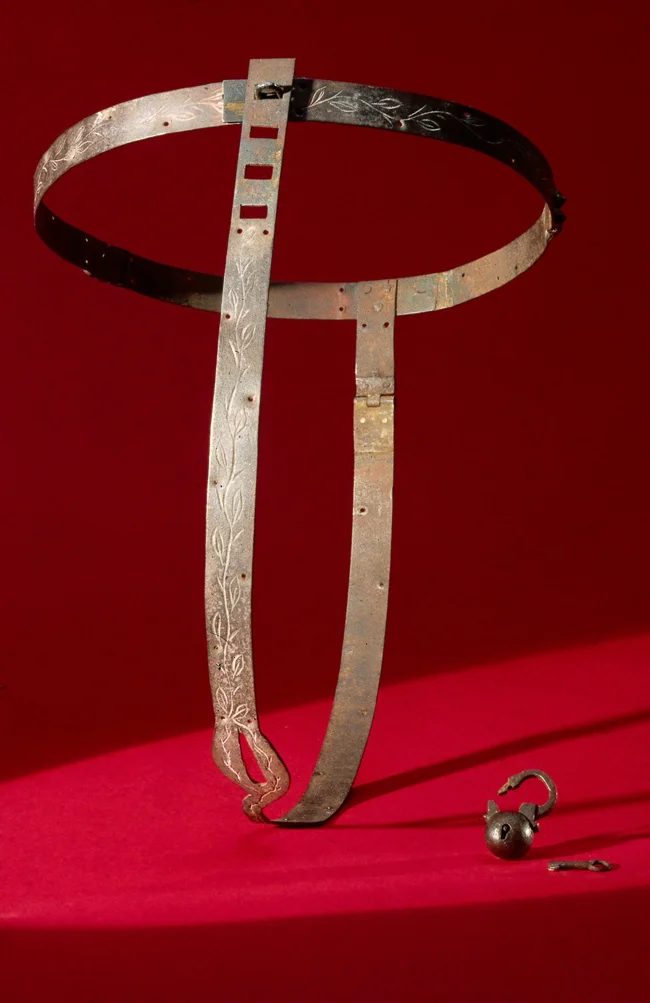
A "medieval" chastity belt with a lock.
In addition, modern researchers tend to believe that surviving chastity belts supposedly dating back to the Middle Ages are Victorian fakes. 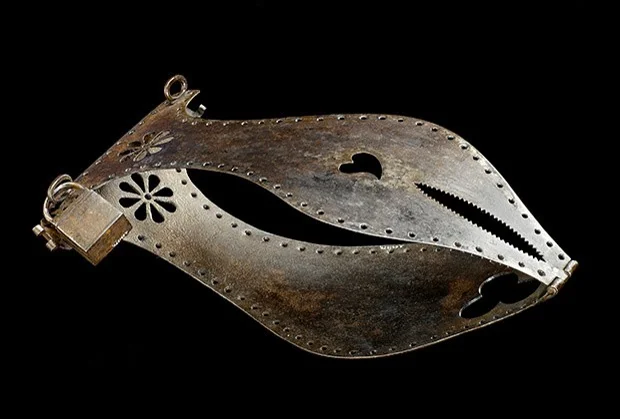
A chastity belt from the London Science Museum (latest data suggests it was made in the 19th century). 
A fabric-lined chastity belt decorated with a floral pattern and a heart pierced by arrows.





























